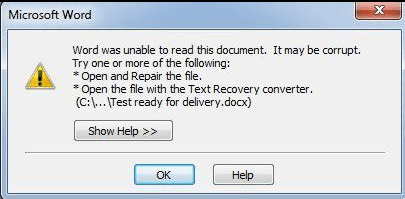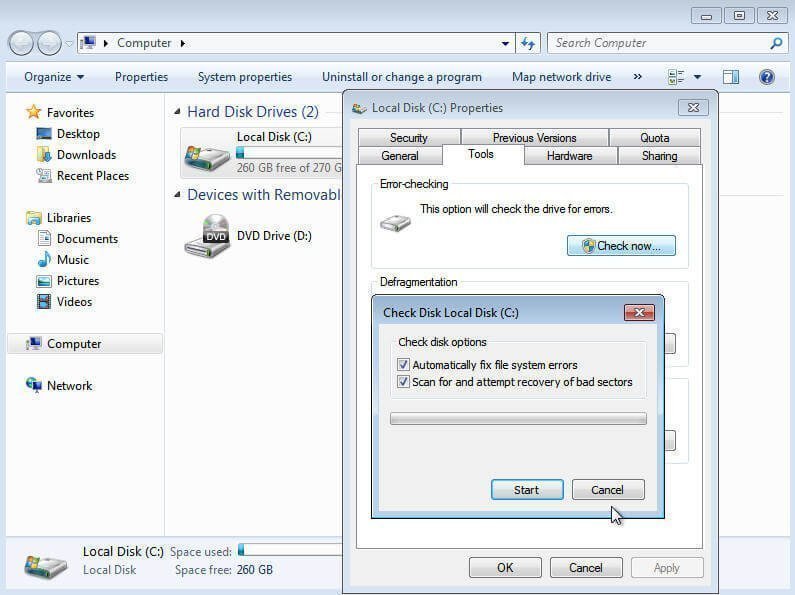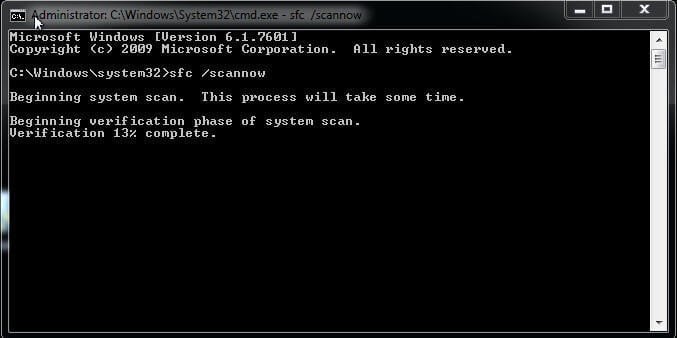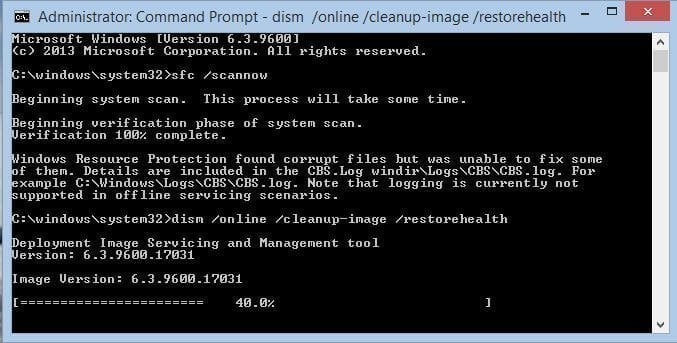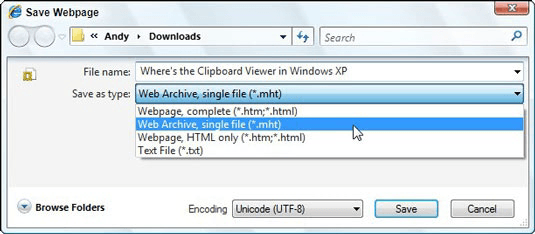How to Fix Corrupted Files in Windows 7, 8, 10, 11
- What is a corrupted file?
- Why is the file corrupted?
- Fix corrupted system files in all Windows systems (4 Ways)
- #1: Repair corrupted files using Windows Properties
- #2: Fix corrupted system files in Windows 7 using SFC
- #3: Repair corrupted boot files in Windows with DISM
- #4: Change the file format to fix corrupted files
- Helpful hints: Prevent data loss due to file corruption
- Summary
What is a corrupted file?
The corrupted files are computer files that suddenly become inoperable or unusable. In fact, every file on your system has a certain structure and content. Thus, if the right information is in the right part of the files, it will work well.
But if the wrong information is written to a file, or the right information is written in the wrong place, the data will be garbled and scrambled, leaving you with a corrupted file.
And the corrupted file will not open at all or show an error message when you try to open it. But it does not affect the original program. That's to say, even if you have a corrupted word file, you still can open other word files and use Word as normal.
Why is the file corrupted?
No matter what is wrong, there is a reason for it. Here we summarize the most common reasons in the following.
1. Your files corrupted during saving due to loss of power or computer crash.
2. Bad sectors, virus, or malware on hard drive or other storage devices.
3. Bad update on your computer.
Fix corrupted system files in all Windows systems (4 Ways)
After getting the reasons for corrupted files, you can try the given methods below to fix it. To prevent data loss due to file corruption, it's suggested to backup files automatically. And I'll introduce this method in the next part.
#1: Repair corrupted files using Windows Properties
If your computer has bad sectors, you can use disk check utility to repair corrupted system files. And the steps will be a little different in different operating systems.
For Windows 7 users:
Open Computer, right-click the hard drive you want to check bad sectors and select Properties. Then, in the Properties window, click Tools > Check now under the Error-checking. Afterward, click Scan for and attempt recovery of bad sectors and hit Start.
For Windows 8/10/11 users:
Go to the Properties of your computer, click Tools and then Check option under the Error-checking. Then, review the scan result and click Scan and repair drive. And choose when to repair the file system.
Step 4. Review the scan result and click Scan and repair drive.
Step 5. Choose when to repair the file system and wait for the final result.
#2: Fix corrupted system files in Windows 7 using SFC
The SFC is a command line utility in Windows 7/8/10/11, which is used to scans for missing or corrupted system files and repairs them. If your problem is related to system boot files, you can try the following steps to fix it.
Step 1. Type cmd in the search box, right-click it and select Run as administrator.
Step 2. In the command prompt window, type sfc/scannow and hit Enter to excute this repair process.
After scanning, you will receive one of the following messages, which will tell you if the corrupted boot files are repaired.
- Windows Resource Protection did not find any integrity violations. This message indicates that there are no missing or corrupted system files.
- Windows Resource Protection could not perform the requested operation. This message means that you need to run SFC command in the safe mode and make sure that the PendingDeletes and PendingRenames folders exist under %WinDir%\WinSxS\Temp.
- Windows Resource Protection found corrupt files and successfully repaired them.
- Windows Resource Protection found corrupt files but was unable to fix some of them. This message means that you need to find the corrupted files and manually replace it with the right one (check this article for detailed steps). To view the details, you can go to CBS.Log %WinDir%\Logs\CBS\CBS.log.
#3: Repair corrupted boot files in Windows with DISM
If you receive the Windows Resource Protection found corrupt files but was unable to fix some of them message in the previous, try DISM command line. It’s a replacement tool for SFC command line, especially when SFC scannow not working.
Step 1. Run cmd as administrator and type the following command in the command prompt window.
DISM /Online /Cleanup-Image /RestoreHealth
Step 2. Wait and restart your computer to make the change available.
#4: Change the file format to fix corrupted files
If the corrupted files is a Word or Excel file, you can try this method to fix it. Please follow the steps below.
Step 1. Open corrupted Word or Excel file, click Save As and select Web Page from the Save as type.
Step 2. Right-click on the previously saved files, select Open with > Microsoft Office Excel. If it's opened normally, go to Save As option again and then select an Excel format .xls or .xlsx as instead. After saving, the corrupted Excel file will be recovered.
Helpful hints: Prevent data loss due to file corruption
You may feel upset when you want to open certain files, but cannot. In this case, you can choose fix corrupted files in Windows 7/8/10/11 or turn to data recovery software, but there is a risk of data loss. To avoid this situation, the best way is to backup files to external hard drive, USB drives, NAS, network share, etc. You need a reliable backup and restore software.
I strongly recommend you use Qiling Disk Master Standard for continuous data protection, not just after repairing the corrupted files. And you can choose different backup methods according to file types.
- For the common files, like music files, video files, word, excel, you could consider creating a file backup with its File Backup. If it is stored in a specific partition, select Partition Backup.
- For the system or boot files, like dll file, cbs.log files, you’d better perform system image backup. Both System Backup and Disk Backup help and will select system files automatically.
And either way, you can backup files automatically with its schedule backups, you can choose among daily, weekly, monthly. But this may result in backup disk full sooner or later, it's suggested to use all the disk space savior features, such as, incremental backup, normal compression, automatic splitting, etc.
Please download this software to have a try!
(PS: The free version only supports Windows 7/8/10/11. For server users, try Qiling Disk Master Server.)
Step 1. Launch Qiling Disk Master Standard, click Backup and File Backup.
Step 2. Click Files or Folder to select files or folders you want to backup.
Step 3. Set up a destination path for your backup and set advanced features. Then, click Proceed to backup files automatically.
✿ Schedule Backup: You can create a daily/weekly/monthly backup or enjoy Event triggers and USB plug in feature in the Professional version.
✿ Backup Scheme: You can set incremental or differential backup to backup only changed files if you modify your files frequently. Also, you can delete old backups to free up disk space with one of the cleanup methods - By quantity, By time, By daily/weekly/monthly. Note most features in the Backup Scheme are not free.
Summary
You can easily fix corrupted files in Windows 7/8/10/11 with given solutions. But there is still a risk of data loss. If you cannot afford it, the best way is to backup files automatically.
Qiling Disk Master Standard is a good option, since it still helps you minimize disk space with multiple features. The most complete way is to enable automatic backup cleanup methods and delete backup files automatically. To protect files on unlimited computers, try Qiling Disk Master Technician.
Related Articles
- Top 2 Ways to Fix a Corrupted User Profile (Windows 7)
Knowing the causes of a corrupt user profile can help you easily and quickly fix a corrupted user profile in Windows 7/8/10. Thus, please find your cause first and then try 4 FREE ways in this article. - Quick Fix to Startup Repair in Windows 7 not Working
Have you ever suffered from Startup Repair Windows 7 not working or are you suffering from it now? Go ahead and see this article, it will offer you good solutions. - Fix Windows Automatic Repair Loop using Command Prompt
Want to fix Windows automatic repair loop? See this article, I will tell you how to fix automatic repair loop in Windows 10/8 using command prompt. - Recover Files from Accidentally Formatted External Hard Drive
I accidentally formatted an external hard drive but I don't want to loss my files, can I recover my files? You can learn how to recover formatted data on external hard drive in this article.
